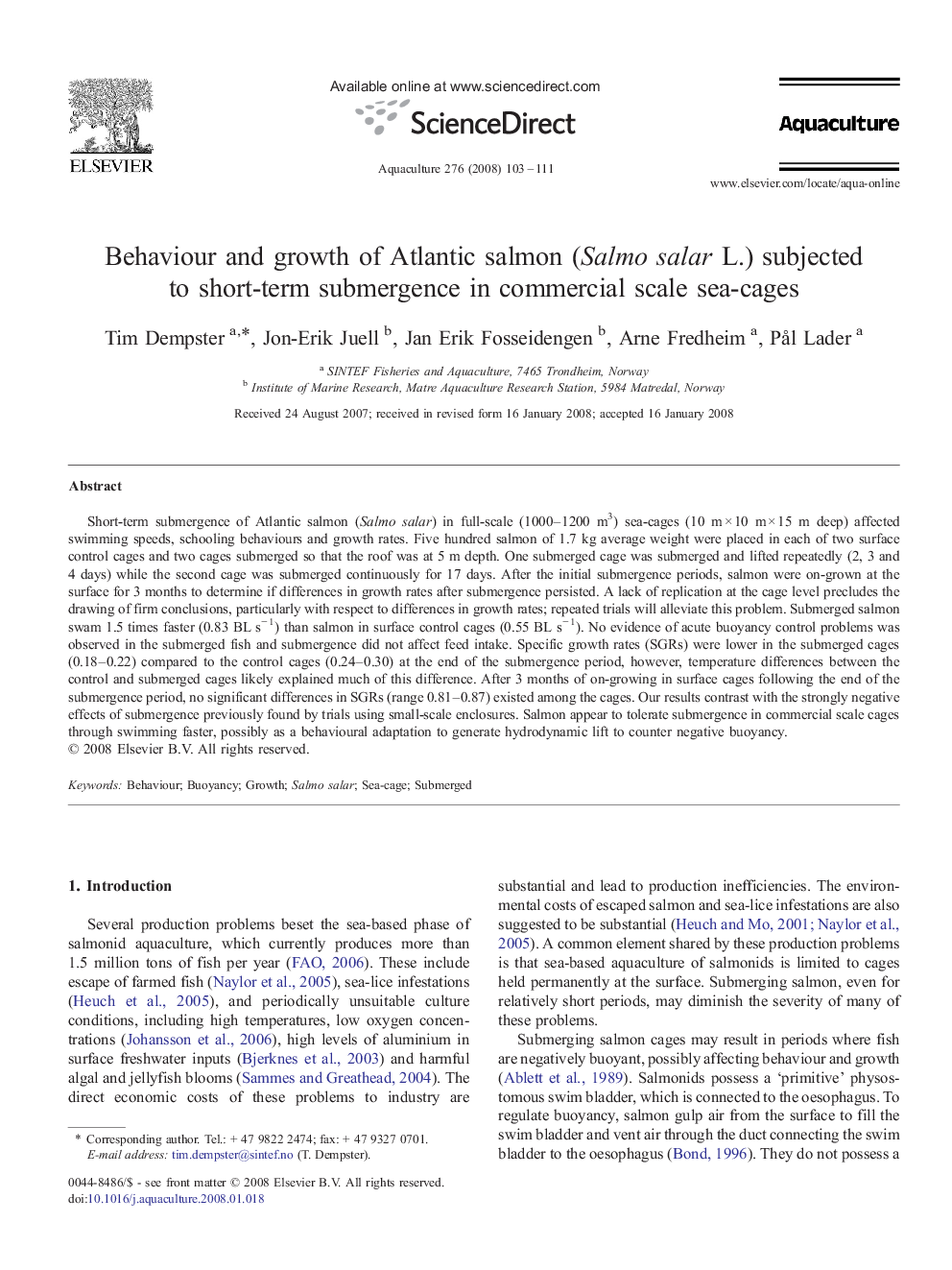| Article ID | Journal | Published Year | Pages | File Type |
|---|---|---|---|---|
| 2424683 | Aquaculture | 2008 | 9 Pages |
Short-term submergence of Atlantic salmon (Salmo salar) in full-scale (1000–1200 m3) sea-cages (10 m × 10 m × 15 m deep) affected swimming speeds, schooling behaviours and growth rates. Five hundred salmon of 1.7 kg average weight were placed in each of two surface control cages and two cages submerged so that the roof was at 5 m depth. One submerged cage was submerged and lifted repeatedly (2, 3 and 4 days) while the second cage was submerged continuously for 17 days. After the initial submergence periods, salmon were on-grown at the surface for 3 months to determine if differences in growth rates after submergence persisted. A lack of replication at the cage level precludes the drawing of firm conclusions, particularly with respect to differences in growth rates; repeated trials will alleviate this problem. Submerged salmon swam 1.5 times faster (0.83 BL s− 1) than salmon in surface control cages (0.55 BL s− 1). No evidence of acute buoyancy control problems was observed in the submerged fish and submergence did not affect feed intake. Specific growth rates (SGRs) were lower in the submerged cages (0.18–0.22) compared to the control cages (0.24–0.30) at the end of the submergence period, however, temperature differences between the control and submerged cages likely explained much of this difference. After 3 months of on-growing in surface cages following the end of the submergence period, no significant differences in SGRs (range 0.81–0.87) existed among the cages. Our results contrast with the strongly negative effects of submergence previously found by trials using small-scale enclosures. Salmon appear to tolerate submergence in commercial scale cages through swimming faster, possibly as a behavioural adaptation to generate hydrodynamic lift to counter negative buoyancy.
